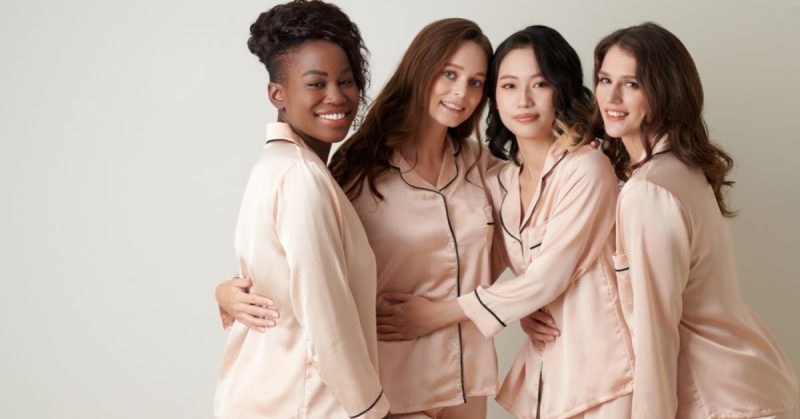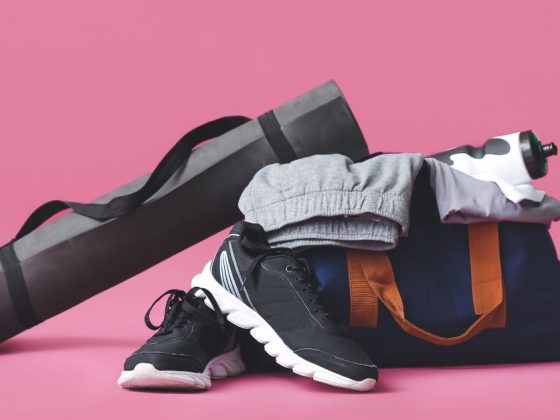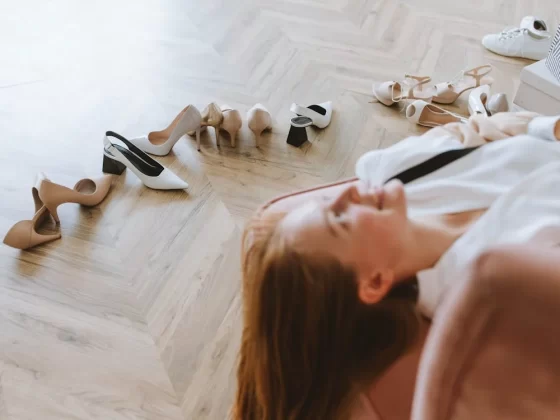
Sleep is one of life’s greatest luxuries — yet, strangely, it’s one many of us treat as an afterthought. We’ll spend hours hunting for the perfect couch, the softest sheets, or even the best blackout curtains, but when it comes to pajamas? Too often, we grab whatever’s on sale or slip into that old, oversized T-shirt we’ve had since college.
The truth is, what you wear to bed matters more than you might think. From restless tossing to waking up sweaty at 3 a.m., uncomfortable sleepwear can quietly sabotage your rest. On the flip side, the right fabric and fit can feel like an invitation to drift off — soft, breathable, and tailored to the way you sleep. Think of it as setting the stage for your body’s nightly recharge.
So, how important is comfy sleepwear, really? The answer: more important than you may have ever imagined. Let’s take a closer look at why what you wear to bed shapes how well you sleep, the fabrics that feel like little slices of heaven, and a few tips to build a nighttime ritual that helps you fall asleep faster, stay asleep longer, and wake up ready to take on the day.
Why Sleepwear Can Transform Your Nights for Better Sleep?
If you’ve ever tried to sleep in something that pinches, twists, rides up, or feels rough against your skin, you already know: bad pajamas can ruin a night’s rest. It’s not just about comfort — it’s about allowing your body to relax fully.
The National Sleep Foundation notes that sleep quality is tied not only to your environment but also to what you wear. Clothes that keep your body at the right temperature, wick away sweat, and don’t irritate your skin can make a surprisingly big difference.
Here’s the thing: pajamas aren’t just “something to wear to bed.” They’re part of your sleep hygiene. Just like brushing your teeth or turning down the lights, putting on the right sleepwear signals to your brain: it’s time to wind down.
The Three Pillars of Comfy Sleepwear
When you break it down, comfort in pajamas usually comes down to three things: fit, design, and fabric.
Fit: The Freedom Factor
Imagine wearing a waistband that digs into your stomach every time you roll over, or a nightshirt so baggy it tangles around your legs like seaweed. Not exactly restful, right?
-
Pajamas that are too tight can cut into your circulation or make you feel restricted.
-
Pajamas that are too loose can bunch up, ride up, or make you feel messy instead of relaxed.
-
And let’s not forget the little things: itchy tags, hard buttons, or awkward snaps.
Good sleepwear should almost disappear once you’re wearing it — no tugging, no adjusting, no thinking about it. That’s when you know you’ve found your perfect fit.
Design: Your Sleep Personality
Some people love loose, flowing nightgowns that feel airy and romantic. Others swear by fitted leggings and tees that stay in place, no matter how much they toss and turn. Your body type, sleep position, and even mood can shape what works best.
-
Side sleepers might love snug fits that don’t twist.
-
Cold sleepers might prefer long sleeves and full-length bottoms.
-
Hot sleepers usually opt for shorts, tanks, or airy gowns.
Think of design as the “style” of your sleep personality. It’s less about what looks good in photos, and more about what feels right at 2 a.m. when the lights are off and comfort is king.
Fabric: The Secret Ingredient to Dreamy Sleep
Fabric is where the magic happens. The right material feels like a lullaby against your skin, while the wrong one can leave you tossing and peeling back blankets in frustration. Here’s how the most popular fabrics stack up:
Cotton: The Everyday Classic
Cotton is like that reliable best friend — always soft, always breathable, and easy to care for. It keeps you cool in summer, cozy in transitional seasons, and durable through dozens of washes.
- Wearing cotton PJs on a warm night feels like a cool breeze tucked under the covers with you.
Silk: The Luxury Escape
Silk is indulgence personified. Smooth, weightless, and hypoallergenic, it glides across your skin like water. It regulates temperature beautifully, so you don’t wake up sweaty or chilled. It even helps reduce wrinkles and hair breakage.
- Sleeping in silk feels like checking into a five-star hotel every night — minus the room service bill.
Flannel: The Winter Hug
When the nights turn frosty, flannel becomes your best friend. Soft, thick, and warm, it’s the fabric version of a steaming mug of cocoa. Perfect for chilly bedrooms or snowed-in weekends.
- Think of it as a built-in blanket you don’t have to wrestle with at night.
Knit: The Stretchy Comfort Zone
Knit pajamas are all about flexibility. They move with you, stretch without pinching, and feel almost like loungewear you’d happily wear to binge-watch Netflix.
- They’re basically the yoga pants of sleepwear — forgiving, cozy, and endlessly comfy.
The Science Behind Cozy Pajamas
You might be thinking: Sure, comfy pajamas feel nice. But do they actually affect sleep quality? The answer is yes.
Studies show that what you wear impacts not just how fast you fall asleep but how deeply you rest. According to the National Sleep Foundation, fabrics like silk and wool can regulate temperature better than synthetics, helping you drift off quickly. Wool, surprisingly, has been linked to reducing the time it takes to fall asleep, while silk is praised as a “magical thermoregulator.”
On the flip side, uncomfortable or non-breathable fabrics can wake you up during the night. If you’ve ever kicked off your covers in a sweat, only to shiver minutes later, you’ve experienced firsthand how much fabric matters.
More Than Pajamas: The Bedtime Ritual
Comfortable sleepwear is one piece of the puzzle. To get the most from your nights, consider pairing your PJs with healthy sleep habits:
-
Stick to a schedule. Going to bed and waking up at the same times helps regulate your internal clock.
-
Wind down. A relaxing routine (like reading, gentle stretches, or tea) signals your body it’s time for rest.
-
Curate your environment. Cool temperatures, cozy bedding, and low light make the bedroom a true sanctuary.
-
Put down the phone. Blue light tricks your brain into staying awake, so give screens a bedtime too.
-
Watch the late-night snacks. Caffeine, sugar, and alcohol can all interfere with sleep.
Dr. Wayne Giles from the CDC summed it up perfectly: “As a nation, we are not getting enough sleep. Lifestyle changes — such as consistent schedules and removing screens from the bedroom — can help people get the healthy rest they need.”
Why Sleep Is Non-Negotiable
Let’s not forget what’s at stake here. Poor sleep isn’t just about being groggy. It’s tied to serious health consequences, including:
-
Weight gain and overeating
-
Reduced concentration and productivity
-
Increased risk of heart disease, stroke, and diabetes
-
Mood disorders like depression and anxiety
-
Lowered immunity
-
Chronic inflammation
On the flip side, investing in your sleep means sharper focus, better mood, stronger immunity, and overall better quality of life. Something as simple as changing your pajamas might not solve everything, but it’s a surprisingly powerful step in the right direction.
How to Shop for the Perfect Pajamas
Now that you know how much fabric and fit matter, let’s talk about how to actually find sleepwear that feels made for you. Whether you’re shopping online or in a boutique, here are some things to keep in mind:
-
Check the Fabric Label. Look for breathable natural fibers (cotton, silk, bamboo, modal, linen) if you run hot, or warmer blends like flannel if you tend to get cold.
-
Feel Before You Buy. If you’re shopping in-store, run your fingers over the fabric. Does it feel smooth, soft, and lightweight — or stiff, scratchy, and heavy? Your skin will notice even more at night.
-
Think About Seasonality. A cozy flannel set is dreamy in winter, but you’ll regret it in July. Having both warm- and cool-weather sleepwear sets means you’re covered year-round.
-
Pay Attention to Seams & Tags. Even the tiniest seam or tag can feel like sandpaper when you’re trying to relax. Many brands now offer tagless options for extra comfort.
-
Consider Movement. If you toss and turn, opt for stretchy knits or looser cuts. If you sleep still as a rock, fitted styles may stay in place more comfortably.
-
Don’t Forget Care Instructions. Silk and some luxury fabrics may require hand-washing or dry cleaning. If you’re not up for that, stick with cotton or bamboo, which are machine-wash friendly.
-
Style Meets Comfort. Who says pajamas can’t be chic? Pick patterns or colors that make you smile. Feeling good in what you wear—even to bed—adds to the relaxation factor.
Pro Tip: Always try pajamas on (or check sizing charts carefully online). What feels roomy and relaxed in daylight should still feel comfortable after you’ve stretched out under the covers.
Conclusion: Small Choices, Big Impact
When it comes to sleep, little details matter. The right pajamas might not seem like a life-changing decision — until you finally experience what it feels like to slip into bed without tugging, itching, sweating, or shivering. Suddenly, bedtime feels less like a battle and more like a reward.
Think of your sleepwear as more than clothes. It’s an act of self-care, a nightly ritual that whispers to your body: it’s time to rest, recharge, and dream. By choosing fabrics and fits that make you feel your best, you’re not just buying pajamas — you’re investing in better mornings, sharper days, and healthier years ahead.
















